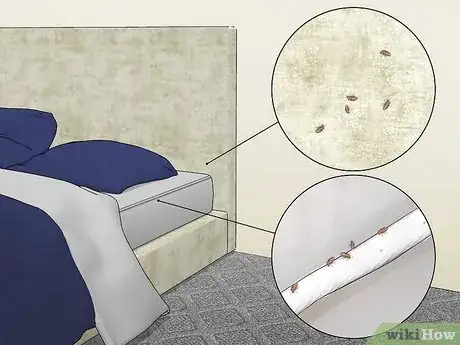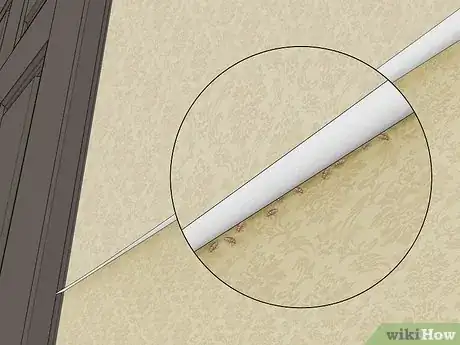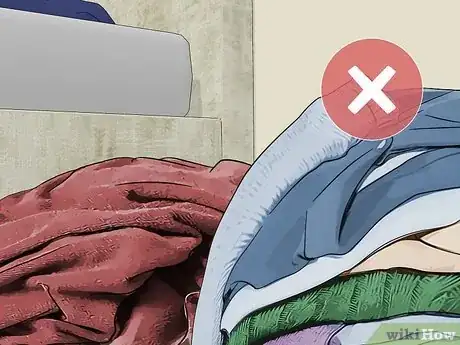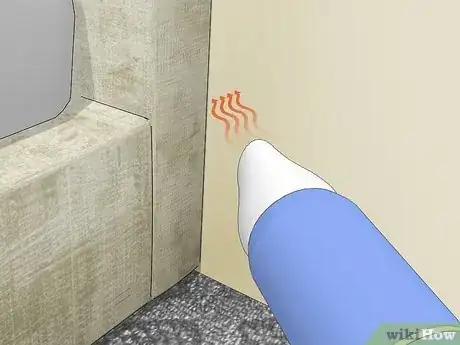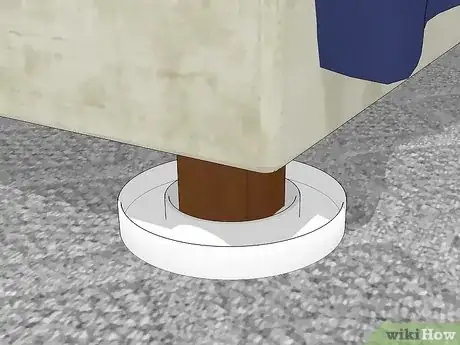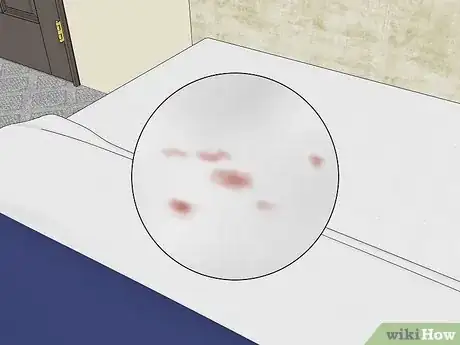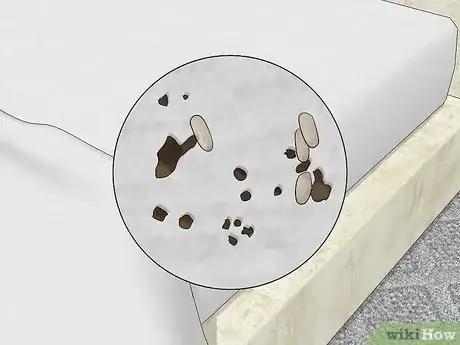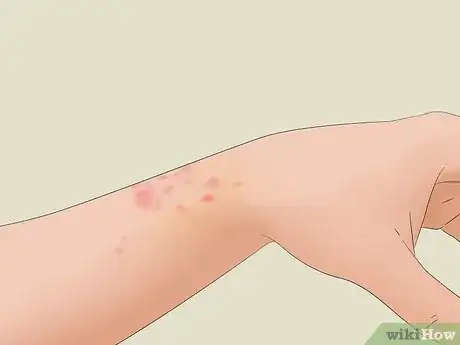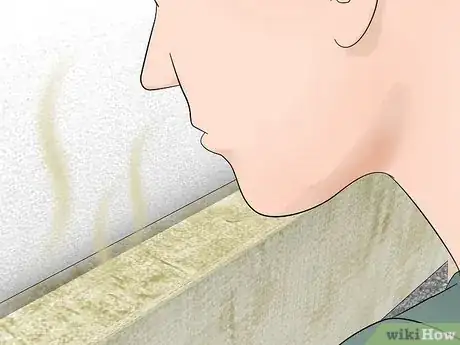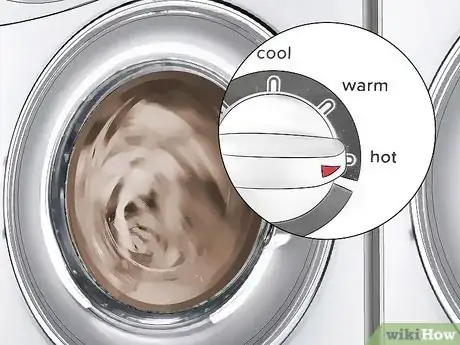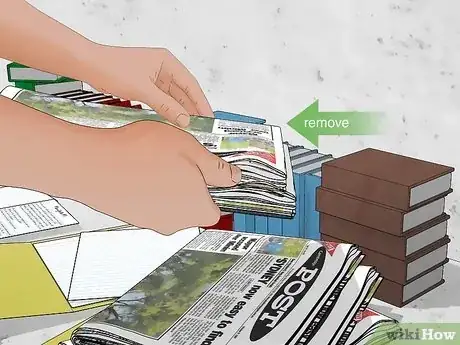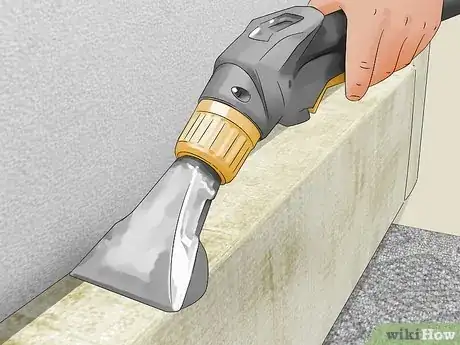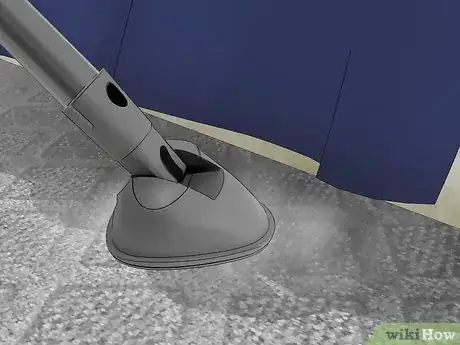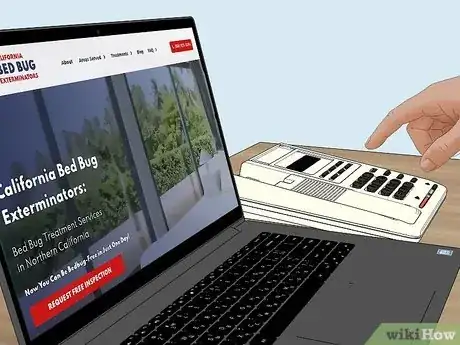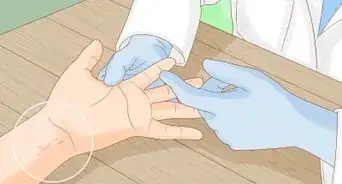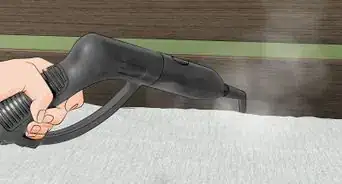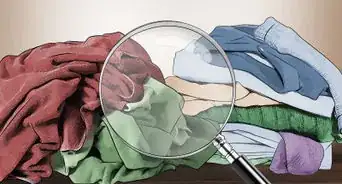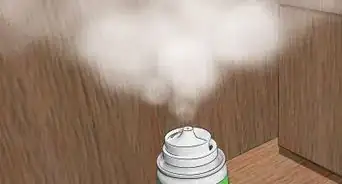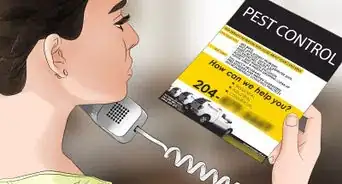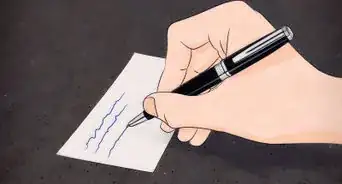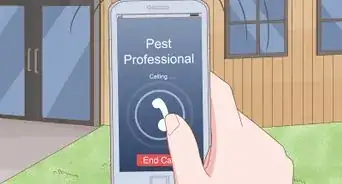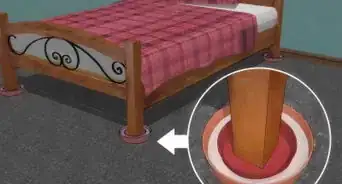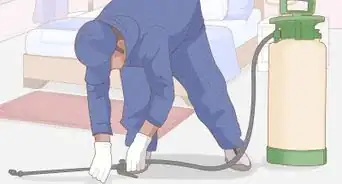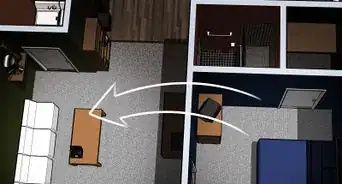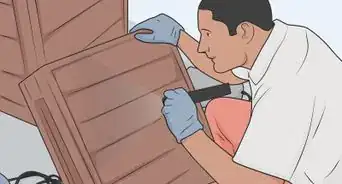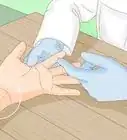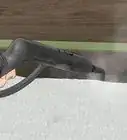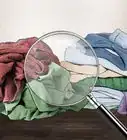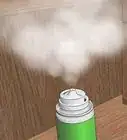This article was written by Kevin Carrillo and by wikiHow staff writer, Hannah Madden. Kevin Carrillo is a Pest Control Specialist and the Senior Project Manager for MMPC, a pest control service and certified Minority-owned Business Enterprise (MBE) based in the New York City area. MMPC is certified by the industry’s leading codes and practices, including the National Pest Management Association (NPMA), QualityPro, GreenPro, and The New York Pest Management Association (NYPMA). MMPC's work has been featured in CNN, NPR, and ABC News.
This article has been viewed 1,085 times.
Bed bugs: these infamous critters are never a welcome house guest, especially as you wake up in the morning with itchy, red bites. Bed bugs are nocturnal, meaning they wait for you to fall asleep before they come out and feed. But if you’re not sure whether you have an infestation or you’re trying to get them out of your home, there may come a time when you need to find them during the day. Fortunately, there are some tried and true techniques you can use to flesh out bed bugs when the sun is out. Keep reading to learn how to find bed bugs and what to look out for to spot an infestation.
This article is based on an interview with our MMPC-certified pest control specialist, Kevin Carrillo. Check out the full interview here.
Things You Should Know
- Use a flashlight to check the seams of your mattress and inside cracks in the wall.
- Point a hair dryer at nooks and crannies to force the bed bugs out with heat.
- Look for signs of bed bugs, like red stains, discarded eggs, and a musty smell.
- Get rid of bed bugs by washing all soft items on high heat and calling a professional exterminator.
Steps
Locating Bed Bugs during the Day
-
1Check the seams of your mattress and headboard. Bed bugs typically congregate around your sleeping areas, so check for bed bugs there first. Try shining a light on the seams of your mattress and behind your headboard. Bed bugs are visible to the naked eye, and they’re typically reddish brown, about the size of an apple seed.[1]
- Finding bed bugs during the day is all about looking for their hiding spots. Since they’re active at night, they usually tuck themselves away in a dark, quiet crevice to sleep during the day.
- It may help to strip your bed and turn your mattress on its side. That way, you can check all of the seams and underneath the mattress, too.
-
2Look behind wallpaper and inside cracks in the wall. While bed bugs prefer to stay on or around your bed, they will sometimes nestle into the walls of your bedroom, too. Check behind electrical outlets, behind wallpaper, and inside of cracks in the wall with a flashlight to see if you can spot them.[2]
- Look around your baseboards and behind curtains, too.
Advertisement -
3Move any clutter around the bed or bedroom. Bed bugs will sometimes hide underneath loose articles of clothing or stuffed animals. If you have anything on the floor of your bedroom, pick it up and move it around to see if you can find any bed bugs hiding beneath.[3]
- Bed bugs typically like to stay within 8 ft (2.4 m) of their food source (wherever the humans sleep).
-
4Point a hair dryer into cracks and crevices. Plug in your hair dryer and turn it on high, then direct it at cracks in the walls, seams of the mattress, or behind your headboard. If there are any bed bugs lurking, the heat will force them out of hiding.[4]
- If you’re able to keep the bed bug in one place for a few minutes, pointing a hair dryer on high heat at it will actually kill a bed bug.
-
5Set up an interceptor trap to kill bed bugs during the day. Interceptor traps attract and kill bed bugs all day long. If you think you might have bed bugs, set up a few interceptor traps around your home. Check them once a day to see if you can spot any dead bed bug bodies inside.[5]
- These traps work well to get rid of small infestations, but won’t work if your entire home is infected. However, they’re a great tool for identifying bed bugs and affirming that you do have a bed bug problem.
Signs of Bed Bugs
-
1Look for red or rust-colored stains on your mattress and sheets. Bed bugs eat blood, so their waste (or their poop) is mostly blood, too. You can usually tell that you have bed bugs if you find small, red or rust-colored stains on your mattress, your sheets, or your walls. This is because the bed bugs are pooping after they eat.[6]
- Identify bed bug droppings by looking for small stains, no bigger than the tip of a pen.
-
2Search around the bedroom for eggs or exoskeletons. Bed bugs lay small, white eggs that are usually around 1 millimeter (0.10 cm) in size. You may also see discarded exoskeletons near the eggs as the bugs shed and molt.[7]
- Usually, eggs and exoskeletons will be congregated around where the bed bugs spend the most time, like on your mattress or in a crack in the wall.
-
3Inspect your family and yourself for itchy, red bites. Identify bed bug bites by looking for itchy, raised red bites, about the size of pinheads. These bites often form a line on the body, and they’ll almost always appear after you wake up (since bed bugs typically bite at night).[8]
- It’s not common, but animals can get bites, too. If you have any furry friends in your home, check their skin for bed bug bites as well.[9]
-
4Smell the area for a sweet, musty odor. Bed bugs produce pheromones, which are special chemicals they use to find each other. These pheromones have an almost sweet, musty smell, that you may be able to detect in your bedroom.[10]
- Bed bugs will release more pheromones when they’re threatened, so don’t be surprised if the smell gets stronger when you find the bed bugs.
How to Get Rid of Bed Bugs
-
1Wash any clothing and bedding in hot water. Hot water will kill live bed bugs (and wash away their eggs, too). As soon as you notice any bed bugs, gather up your bedding, clothing, and stuffed animals, and wash them on the hottest setting your washer has. Then, dry them in the dryer for at least 30 minutes on high heat.[11]
- If you can’t wash items of clothing or bedding, seal them in a plastic bag and freeze them under 32 °F (0 °C) for at least 4 days.
-
2Get rid of any clutter in your home. Bed bugs love hiding underneath loose clothing, soft toys, and papers. If your home has any clutter in it, get rid of the clutter and make sure the floor stays neat and tidy.[12]
- To avoid bringing bed bugs home with you, inspect any furniture you buy very carefully. Used furniture is more likely to have bed bugs than brand new items.
-
3Vacuum nooks, crannies, and crevices in your home every day. Bed bugs are good at hiding, and they won’t die easily. Use a vacuum with a hose attachment to vacuum all the nooks and crannies in your bedroom. When you’re done vacuuming, dump the vacuum bag into the garbage and take it outside right away.[13]
- Bed bugs are crafty, and leaving them inside your vacuum won’t kill them. Instead, they’ll just crawl out of the vacuum and back into your home.
-
4Treat carpets and furniture with a steam cleaner. Use steam to kill bed bugs and their eggs. Buy a steam cleaner or rent a steam cleaner from a hardware store, then use it on your carpet and your furniture.[14]
- You can also use a steam cleaner on soft items like curtains or tapestries.
- One steaming session may not be enough to get rid of all the bed bugs. Try 2 to 3 steam sessions over a week-long period to kill all of the bugs.
-
5Hire a professional exterminator. Bed bug infestations are hard to handle on your own. The best way to get rid of bed bugs is to call a local professional for an extermination. They will use chemicals to treat your home and kill any existing bed bugs.[15]
- If you still aren’t sure whether or not you have bed bugs, hire a canine inspection. Dogs can be trained to sniff out bed bugs and give an accurate reading of where they are in the home.
- If you rent your home, contact your landlord or your property manager as soon as you notice signs of bed bugs. They will likely want to hire an extermination service right away.
Warnings
- Bed bugs are very hard to get rid of on your own. As soon as you notice the bed bugs, call a professional right away.[16]⧼thumbs_response⧽
References
- ↑ https://www.health.ny.gov/environmental/pests/bedbugs.htm
- ↑ https://www.cdc.gov/parasites/bedbugs/faqs.html
- ↑ https://www.cdc.gov/parasites/bedbugs/faqs.html
- ↑ https://www.consumerreports.org/pest-control/bed-bug-myths-debunked-a1150417827/
- ↑ https://www.epa.gov/bedbugs/do-it-yourself-bed-bug-control
- ↑ https://my.clevelandclinic.org/health/articles/17847-bedbugs
- ↑ https://www.cdc.gov/parasites/bedbugs/faqs.html
- ↑ https://www.health.ny.gov/environmental/pests/bedbugs.htm
- ↑ https://www.avma.org/resources/pet-owners/petcare/bed-bugs-and-pets-faq
- ↑ https://www.cdc.gov/parasites/bedbugs/faqs.html
- ↑ https://my.clevelandclinic.org/health/articles/17847-bedbugs
- ↑ https://www.health.ny.gov/environmental/pests/bedbugs.htm
- ↑ https://www.health.ny.gov/environmental/pests/bedbugs.htm
- ↑ https://my.clevelandclinic.org/health/articles/17847-bedbugs
- ↑ https://www.cdc.gov/parasites/bedbugs/faqs.html
- ↑ https://www.cdc.gov/parasites/bedbugs/faqs.html
